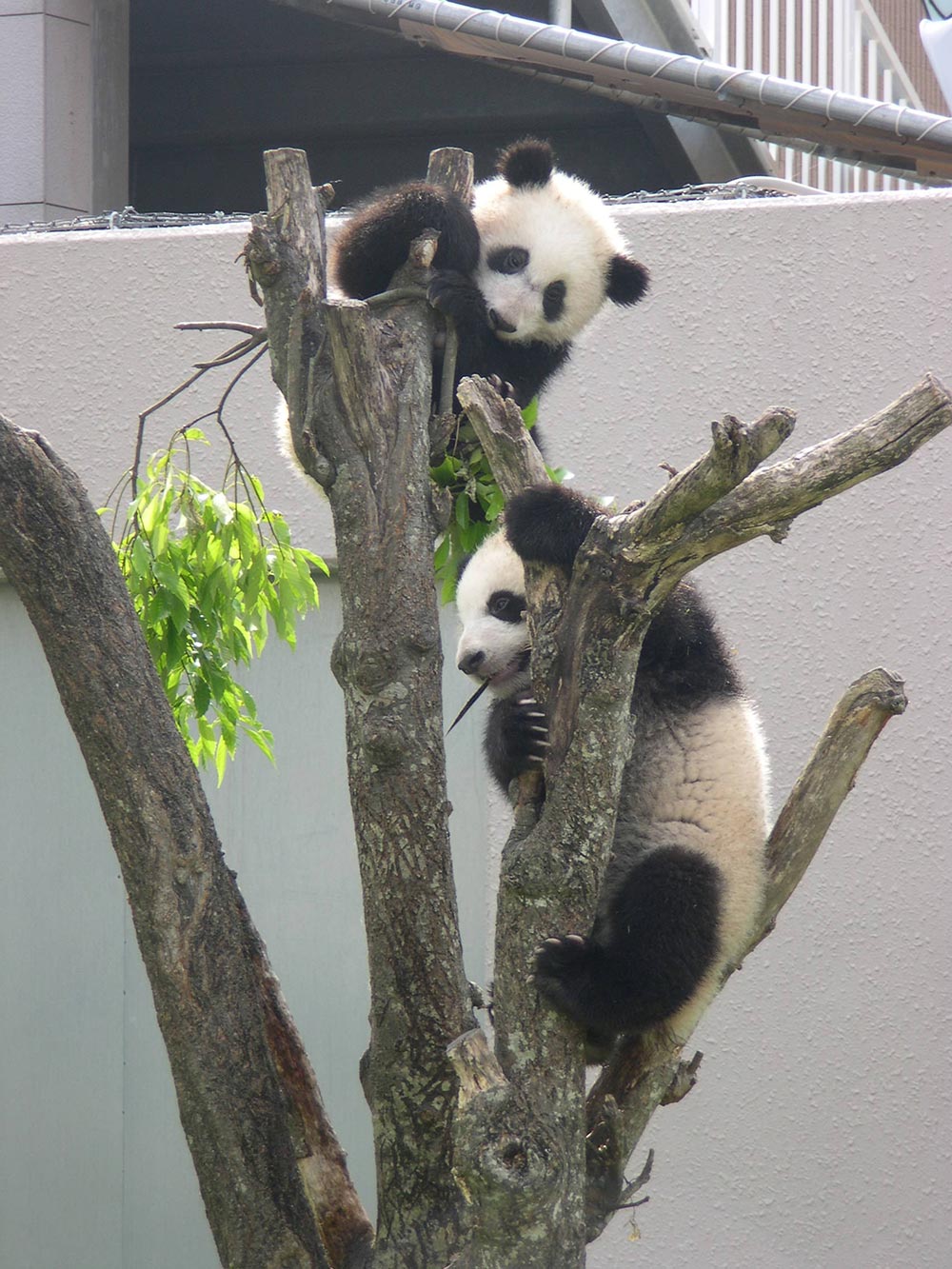NIKKOR - The Thousand and One Nights No.24

Converter lenses for COOLPIX 4300
The eleventh Tales discussed a large-aperture, super telephoto lens NIKKOR-H 300mm f/2.8 made exclusively for news photographers. In the Tale Thirteen, I discuss about the Reflex-Nikkor 500mm f/8 (New) which will be more familiar to amateur photographers within super telephoto lenses.
Tonight's tale is a continuation of Tale Twenty- Two and concerns the converter lenses for COOLPIX 4300.
by Kouichi Ohshita
I. Encounter with Nikkor

The COOLPIX 4300 is designed to accommodate various converter lenses for expanding the shooting range. A variety of converters is available for COOLPIX 4300, from the FC-E8 fisheye to the TC-E3ED 3x teleconverter, which can extend the focal length of the on-camera lens equivalent to 38 - 115mm to the extent equivalent to 8mm circular fisheye, and further up to 345mm ultra telephoto. It would be too cumbersome to collect these lenses in the form of individual interchangeable lenses, but the COOLPIX 4300 camera plus a converter combo is compact enough to fit in a small bag.
The product concept of converter lenses specifically intended for the digital camera started during the development of COOLPIX 900. In those days, interchangeable lens digital cameras interchangeable lens digital cameras were too expensive to attract the average shooter, therefore, a limited number of professional photographers used them only for specific applications. The COOLPIX 900 has incorporated the 3x zoom on-camera lens with a focal length equivalent to 38 - 115mm, but it is difficult to provide satisfactory results in applications such as shooting objects at shorter distance at shorter object distances or taking large images of distant subjects. Then, in an effort to make it possible to accommodate a variety of shooting conditions, similar to those achieved by changing the lenses in an SLR system, the development of converter lenses was initiated.
Converters used in interchangeable lenses are of the rear converter design for installation between the on-camera lens and the focal plane. In practice, however, this design requires disconnection of the on-camera lens to install the converter, and thus it cannot be used in the COOLPIX cameras which features an integrated camera and lens design. In addition, although the rear converter design can be applied to telephoto converters, in theory it cannot be used to realize wide-angle converters which expand the viewing angle by decreasing focal length. Therefore, the front converter design has been adopted for the COOLPIX, in which the converter is installed in front of the on-camera lens. The front converter may be considered a kind of telescope that allows the camera to "look through" for modifying the size of subjects.
The front converter design has a drawback: the lens construction can be huge for larger on-camera lens sizes. Fortunately, however, the on-camera lenses of COOLPIX are very small as shown in Fig.1 compared to the interchangeable lenses for the SLR system, and this helps realize a practical converter lens size. The rear teleconverters used in interchangeable lenses involve the problem that the lens f-numbers are stopped down depending on the magnification with higher lens power values. In contrast to this, the front converter design provides the advantage that lens f-numbers are left unchanged. Consequently, the converter lenses for COOLPIX are all designed with f-numbers that remain consistent between before and after the installation of the converters.
II. Available Product Lineup


Let us introduce you to the available lineup of converters.
The converter lenses for COOLPIX have been designed specifically for COOLPIX, and the lenses on the COOLPIX cameras are also designed to ensure optimum match with the converters. This ensures that you can use the converters worry-free with minimum deterioration in performance.
The FC-E8 features a converter lens configuration of 5 elements in 4 groups as shown in Fig. 2, and takes circular fisheye images at a viewing angle of 183 degrees. The available coverage over 180 degrees is owing to the necessary "margin for pasting" for forming a 360-degree image from two circular images of the front and back. As seen in Fig. 2, this lens configuration is similar to that of OP 10mm f/5.6 and 8mm f/2.8 introduced in Tale Six. This demonstrates that, even in the digital age, the lenses developed by our predecessors provide good examples for us.
The WC-E63 shown in Fig. 3 is a wide-angle, 0.63x converter with power designed to convert the wide-angle end of COOLPIX 4300 to 24mm (35mm equivalent), and thus offers the pleasure of taking pictures with a wide-angle lens as shown in Sample 1. This converter is a successor to the WC-E24 introduced for use with the COOLPIX 900. It features a new lens configuration of 4 elements in 4 groups, providing further improvement in both distortion and chromatic aberration. This wide-angle converter can focus at the entire zooming range. However, needless to say, it is recommended to detach the converter when setting the zoom control to the intermediate focal length or to the telephoto side.

COOLPIX 4300
WC-E63 Wideangle Conveter ISO100 P.Auto
f/2.8 1/394 sec.
©2005 Kouichi Ohshita

COOLPIX 4300
TC-E2 Telephoto Converter
ISO100 P.Auto
f/4.9 1/147 sec.
©2005 Kouichi Ohshita
The TC-E2 is a 2x teleconverter to convert the focal length for the telephoto side of COOLPIX 4300 to 230mm (35mm equivalent). As shown in Fig. 4, it is relatively extravagant with a lens configuration of 4 elements in 3 groups for a telephoto converter, and it provides superior compensation for both chromatic aberration and distortion, which could be drawbacks of the teleconverter, as demonstrated by Sample 2.
The TC-E3ED is a 3x teleconverter to convert the telephoto side of COOLPIX 4300 to 345mm (35mm equivalent). It features a lens configuration of 6 elements in 3 groups plus two ED (Extra-low Dispersion) lenses as shown in Fig. 5, which offers superior compensation for chromatic aberration despite the 3x lens power.
The two telephoto converters can cause vignetting at the edge of images when zoomed up toward the wide-angle side. Therefore, the zooming range is limited by the teleconverter mode to the intermediate focal length to the telephoto side. In addition, theoretically the installation of the front teleconverter increases the shortest possible shooting distance. In contrast to the rear teleconverter which causes an increase in f-numbers while leaving the shortest possible shooting distances unchanged, the front teleconverter maintains f-numbers consistent while increasing the shortest possible shooting distances. For satisfactory results, it is recommended to remember that the shortest possible shooting distance is increased by the magnification of the converter lens squared, say, with an increase of about 4 times for the 2x converter, and an increase of about 9 times for the 3x teleconverter. In short-range shooting, the selection of macro mode can help provide satisfactory results.
III. Combined Use with a Telescope

COOLPIX 885
8cm diameter refracting telescope
ISO400 M.exposure
f/13.6 1/15 sec.
©2005 Kouichi Ohshita
The COOLPIX 4300 may be used with any astronomical telescope for taking pictures.
As mentioned earlier, the front converter is a kind of telescope that allows a camera to see through it. The camera can be attached to the eyepiece of the telescope to allow the camera to "look through" it. The interchangeable lenses for the SLR system make it difficult to properly look through a telescope due to the larger lens diameters, causing vignetting at the edge of the image field. However, the on-camera lens of COOLPIX 4300 can successfully "look through" a telescope without any vignetting by changing zoom setting from the intermediate focal length to the telephoto, owing to the relatively small front lens element and by setting the zoom to the intermediate focal length of the telephoto side.*
Sample 3 is a picture of the lunar occultation of Saturn, which was taken with the COOLPIX 885 attached onto the eyepiece of a telescope with a 8-cm lens aperture. Saturn is visibly the darkest among the five major planets, and thus it requires an exposure time of several seconds to capture it on roll film with a fast-speed-lens astronomic telescope of the automatic tracking type. As such, Saturn has been a difficult subject to capture, although it can be photographed very easily simply by attaching the digital camera to the telescope. This recipe for success can be attributed to the fact that compact digital cameras feature smaller screen sizes as mentioned in Tale Twenty Two, and therefore, the required focal length for capturing the image of Saturn in the same size may be only a fraction of that required for 35mm-type film cameras.
Nikon Digiscoping SystemA digital camera field scope system, that is, a combination of the digital camera and the Nikon Field Scope, is available to allow easy-to-manipulate telephotography with the aid of a dedicated attachment to firmly fasten the camera and field scope.
- *When allowing the camera to "look through" a telescope, care must be taken not to damage the COOLPIX and telescope lens due to interference. In addition, never attempt to direct the camera and telescope at the sun to prevent possible loss of eyesight and/or damage to the camera.
TelescoMicro

COOLPIX 4300
TelescoMicro
ISO100 P.Auto
f/4.1 1/349 sec.
©2005 Kouichi Ohshita

COOLPIX 4300
TC-E2 Telephoto Converter
ISO100 P.Auto
f/4.4 1/253 sec.
The idea of taking pictures by attaching the camera to the eyepiece of a telescope is applied in the TelescoMicroED6x18D available from NikonRayfact. This TelescoMicro may be independently used as a high-performance monocle and microscope. It also allows ultra telephotography at a focal length equivalent to 340 - 690mm and ultra macro-photography of smaller subjects when combined with the COOLPIX 4300.
Sample 4 is a close-up of stamens of a flower. The TelescoMicro can reproduce crisp and clear images of such small objects invisible to the naked eyes as demonstrated by the Sample.
The real strength of the TelescoMicro comes into play in the macro-photography of relatively distant subjects such as the close-up of a blossom. Sample 5 depicts a close-up of cherry blossoms. A recipe for success may be getting close to a subject at a focal length possibly closer to a wide angle as well as the use of a tripod wherever possible. The TelescoMicro is compact in design, though it provides a practical focal length in terms of the 35mm type. Needless to say, special attention should be paid to avoid camera shake.

NIKKOR - The Thousand and One Nights
The history of Nikon cameras is also that of NIKKOR lenses. This serial story features fascinating tales of lens design and manufacture.

